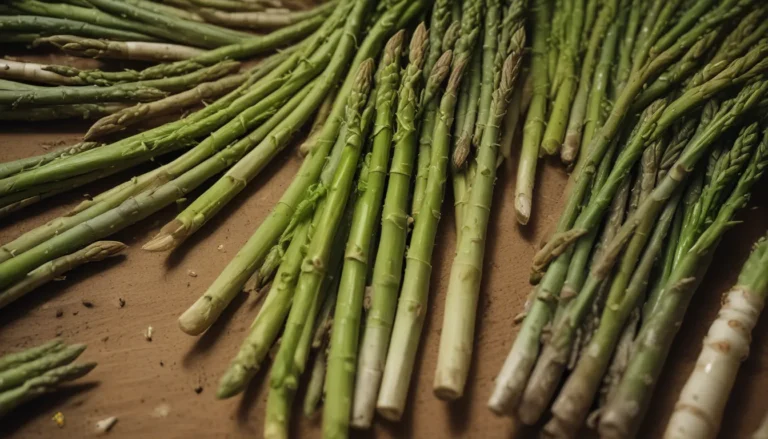A Comprehensive Guide to Growing and Caring for Firebush

If you’re looking to add a splash of vibrant color and attract beneficial pollinators to your garden, look no further than the Hamelia patens, also known as firebush. This drought-tolerant, woody shrub is a delightful addition to any landscape, with its striking orange-red tubular flowers and fleshy berries that attract songbirds.
Let’s dive into the world of firebush and explore how you can cultivate and care for this beautiful plant. From propagation to pest control, we’ll cover everything you need to know to ensure your firebush thrives in your garden.
The Fascinating World of Firebush
The Hamelia genus, named after French polymath Henri-Louis DuHamel de Monceau, consists of 16 different species, with H. patens being the most widely distributed. Native to the Americas, firebush is popular for its ornamental value and medicinal uses by indigenous peoples.
In addition to its vibrant blooms, firebush extracts have been found to possess various medicinal properties, making it a valuable plant in traditional medicine. In the landscape industry, firebush has become a favorite ornamental plant for its tropical appearance and low maintenance.
Propagation Made Easy
Propagating firebush can be done through seeds, cuttings, or transplants. Collecting seeds from ripe berries or taking stem cuttings are common methods to propagate this plant. Whether you choose to grow them in a pot or in the ground, ensuring well-draining soil and ample sunlight is essential for successful propagation.
- From Seed: Collect fresh seeds from ripe berries and sow them in a well-draining seed-starting mixture. Keep the seeds moist and provide adequate sunlight for germination.
- From Stem Cuttings: Take softwood stem cuttings in spring and root them in a well-draining potting mix. Maintain warmth and indirect light for successful root development.
- Transplants: Plant nursery starts, seedlings, or cuttings in the spring in well-prepared holes with adequate spacing. Water the transplants thoroughly until they become established.
Cultivars to Consider
For gardeners looking for specific ornamental traits, there are several cultivars of firebush to choose from:
- Compacta: A dwarf variety with smooth leaves and yellow-orange blooms.
- Calusa: Features bright flowers, disease resistance, and red-tinged leaves.
- Firefly: Similar to the species plant but with smaller leaves and flowers.
- Lime Sizzler: Boasts orangish-red flowers and variegated foliage for a striking appearance.
Essential Growing Tips
To ensure your firebush thrives, consider the following growing tips:
- Provide full sun exposure for optimum growth.
- Use well-draining soil to prevent waterlogging.
- Water deeply when the top soil dries out to promote healthy root development.
Pest and Disease Management
While firebush is relatively resistant to pests and diseases, it’s essential to be aware of potential issues that may arise:
- Pests: Aphids, scale, and spider mites are common pests that can infest firebush. Control measures such as neem oil or insecticidal soap can help manage these pests effectively.
- Disease: Diseases like bacterial leaf spot and root rot can affect firebush. Proper sanitation and watering practices can prevent the spread of these diseases.
Best Uses in the Landscape
Firebush is a versatile plant that can be used in various ways in the landscape:
- Create mixed perennial borders or mass plantings.
- Use as screens or hedges to add privacy to your garden.
- Attract bees, birds, and butterflies with its vibrant blooms.
Quick Reference Growing Guide
- Plant Type: Woody shrub
- Flower/Foliage Color: Orangish-red/bright green, yellow, red
- Hardiness (USDA Zone): 9-12
- Bloom Time: Spring-fall
- Exposure: Full sun to part shade
- Water Needs: Moderate
- Family: Rubiaceae
Embrace the Beauty of Firebush
With its colorful blooms and low maintenance requirements, firebush is an excellent addition to any garden. Whether you choose to propagate it from seeds or cuttings, or select a specific cultivar to suit your preferences, this plant is sure to enhance your outdoor space.
So go ahead, join the club of firebush enthusiasts and bring a touch of the tropics to your garden today. Remember, gardening is a journey of learning and growth, so don’t be afraid to experiment and see your firebush flourish under your care.
We hope you’ve enjoyed this comprehensive guide to growing and caring for firebush. If you have any questions or experiences to share, feel free to leave a comment below. Happy gardening!





